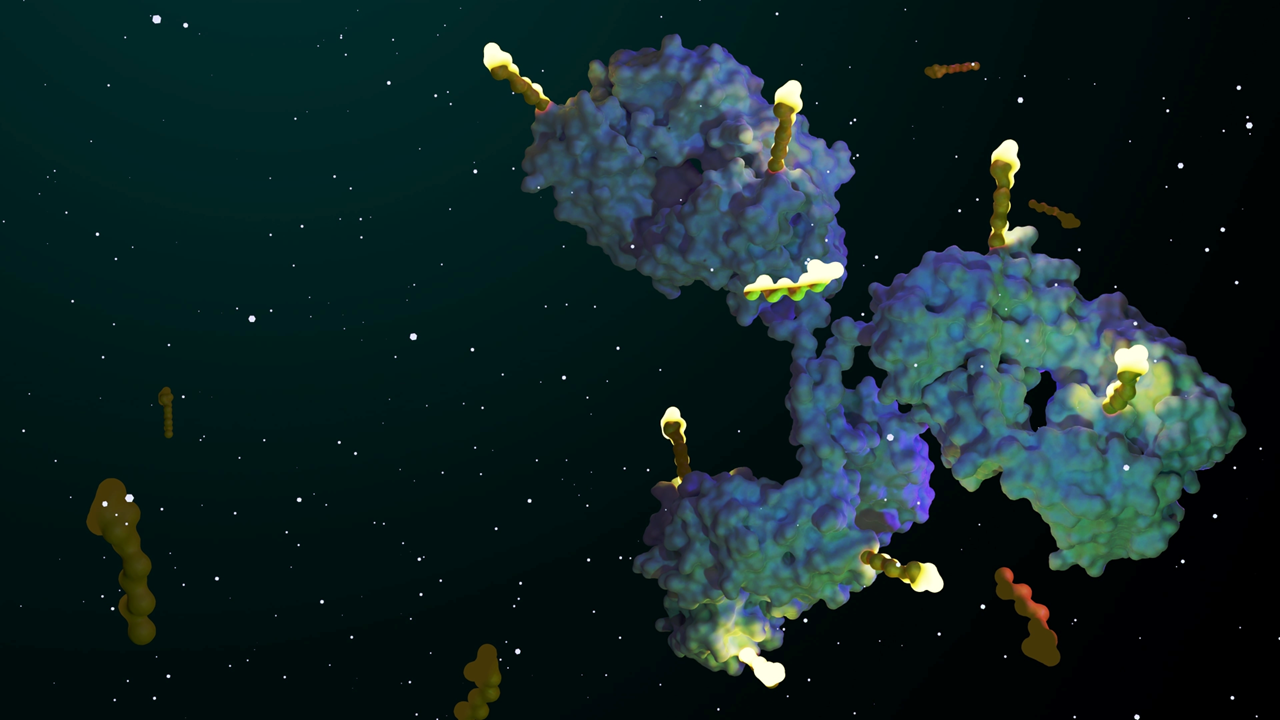In the rapidly advancing landscape of oncology, Bruton tyrosine kinase (BTK) inhibition has emerged as a crucial therapeutic approach, particularly for B-cell malignancies like chronic lymphocytic leukemia (CLL). As the most common leukemia in adults, CLL is characterized by the overgrowth of mature B-lymphocytes, driven by the overexpression of key mediators such as BTK. BTK inhibitors have revolutionized the treatment of these malignancies, significantly improving patient outcomes since their initial approval in 2016.

Chief Medical Officer, Hematology
BeiGene
In this exclusive interview, we delve into the insights of Dr. Mehrdad Mobasher, Chief Medical Officer, Hematology, at BeiGene. With an extensive background in hematology, Dr. Mobasher elucidates the role and evolution of BTK inhibition in oncology, assesses advancements in BTK inhibitor therapies and discusses the latest updates from zanubrutinib’s extensive clinical program.
We will also explore the next major steps in BTK inhibition research, the challenges in treating B-cell malignancies and the significant breakthroughs achieved during Dr. Mobasher’s tenure at BeiGene.
Read on to explore the forefront of hematology and the promising future of BTK inhibitors.
XTALKS CLINICAL EDGE: Issue 3 — Interview with BeiGene’s Dr. Mobasher
Xtalks Clinical Edge is a magazine for clinical research professionals and all who want to be informed about the latest trends and happenings in clinical trials. This magazine immerses you in a world where industry leaders, patient advocates and top researchers converge to provide the most insightful perspectives on clinical trials.
What is the role of BTK inhibition in the current oncology treatment landscape and how it has evolved over the past few years?
Dr. Mobasher: BTK inhibitors play an important role in the treatment of B cell malignancies, particularly CLL, which is the most common leukemia in adults.
CLL is characterized by overgrowth of mature B-lymphocytes. One of the causes of lymphocyte over-accumulation can be attributed to increased activation of the B-cell receptor signaling pathways, which is often driven by overexpression of key mediators, including Bruton’s tyrosine kinase — or BTK.
BTK inhibitors, like zanubrutinib, block the B-cell receptor signaling cascade by binding to the BTK enzyme, preventing the proliferation and survival of malignant B cells.
In CLL, these therapies have vastly improved patient treatment outcomes since their initial approval in this indication in 2016.
How do you assess the advancements in BTK inhibitor therapies, particularly in terms of their mechanism of action and efficacy compared to traditional treatments?
Dr. Mobasher: BTK inhibitors have helped to progress the treatment landscape and improve outcomes for patients facing CLL and other B-cell malignancies and have become the standard of care for these patients.
Not only have they improved upon chemo-immunotherapy, but we have also seen that next-generation BTK inhibitors, like zanubrutinib, have improved upon ibrutinib — the first therapy approved in the class.
Zanubrutinib was specifically designed to improve outcomes and be successful where first- and second-generation BTK inhibitors were not. It was engineered to have high potency, bioavailability and kinase selectivity that led to improved efficacy and safety in B-cell malignancies.
For example, our Phase III ALPINE study specifically evaluated zanubrutinib vs ibrutinib in patients with relapsed or refractory CLL or small lymphocytic lymphoma (SLL). The study showed that treatment with zanubrutinib achieved superior and sustained overall response rate (ORR) and progression-free survival (PFS) vs ibrutinib with sustained benefit from 3+ years follow-up. This was also seen in the high-risk patients with del(17p) and/or TP53 mutation which shows the unique differentiation of our BTK inhibitor.
Additionally, the safety profile of zanubrutinib was better than that of ibrutinib, with fewer adverse events leading to treatment discontinuation and fewer cardiac events, including fewer cardiac events leading to treatment discontinuation or death. We saw this in ALPINE and in another head-to-head study vs ibrutinib we conducted called the ASPEN trial.
This was the first and only study to show superior efficacy compared to a first-generation BTK inhibitor, including in hard-to-treat patients.
Can you discuss the latest updates from zanubrutinib’s extensive clinical program, particularly in relation to combination therapies, across multiple B-cell malignancies with more than 5,000 patients enrolled to date?
Dr. Mobasher: Recently, during the European Hematology Association 2024 Hybrid Congress (EHA2024), we shared new data from an exploratory arm of the SEQUOIA study, evaluating zanubrutinib in combination with venetoclax in treatment-naïve (TN) patients with high-risk CLL/SLL with del(17p) and/or TP53 mutation. The preliminary data demonstrated that in the 65 response-evaluable patients treated with zanubrutinib plus venetoclax, the ORR was 100%, and the rate of complete response (CR) plus CR with incomplete hematopoietic recovery (CRi) was 48%. With a 31-month median follow-up, the safety profile of the combination was shown to be consistent with that of the treatment components, and no new safety signals were seen.
With one of the largest pools of high-risk patients of any published study to date, SEQUOIA arm D demonstrates how BCL2 inhibitor therapies can complement zanubrutinib as a backbone therapy to achieve deep clinical response even in high-risk patient populations.
We plan to continue to follow this arm of SEQUOIA, including evaluating the potential for time-limited therapy with longer follow-up. As part of our development program, we are now combining zanubrutinib with our investigational next-generation BCL2 inhibitor sonrotoclax which has higher potency relative to other members of the BCL family.
Looking ahead, what are the next major steps in BTK inhibition research?
Dr. Mobasher: Combination approaches with BTK inhibition are definitely something we are actively pursuing. In fact, we recently launched the randomized Phase III CELESTIAL study, which is evaluating BeiGene’s novel BCL2 inhibitor sonrotoclax in combination with backbone therapy zanubrutinib.
Sonrotoclax is an investigational small molecule designed to overcome efficacy, tolerability and adaptation limitations of the first-generation BCL2 inhibitor, venetoclax.
BCL2 is an anti-apoptotic signaling molecule that promotes cellular survival. It is often overexpressed in cancer cells, and it is a clinically validated oncology target for cancer including hematological malignancies.
In preclinical studies, we’ve seen that sonrotoclax is more potent and selective for BCL2 compared to venetoclax and sonrotoclax has a shorter half-life with no accumulation in the peripheral blood.
We have seen promising clinical activity and favorable tolerability of sonrotoclax in several settings across both B-cell and myeloid malignancies, both as monotherapy and as part of combination regimens. Specifically in combination with our BTK inhibitor, we see deep and durable response and no safety signals including no lab or clinical tumor lysis syndrome, early death, or increased infections.
Given all the available data and the promising efficacy and safety, we believe sonrotoclax has the potential to be a best-in-class BCL2 inhibitor.
Are there specific challenges in B-cell malignancies that BeiGene aims to address through upcoming studies?
Dr. Mobasher: Disease progression and resistance to BTK inhibitor therapies is one of the challenges BeiGene is actively working to address through our pipeline. Disease progression for patients on BTK inhibitors is often triggered by BTK mutations that lead to treatment resistance, so there is a clear need for BTK-targeting agents that can overcome BTK inhibitor resistance.
Our BTK degrader is an orally available investigational molecule from our Chimeric Degradation Activation Compound (CDAC) platform. The platform is optimized to generate molecules that are engineered to avoid immunomodulatory drug activity and potentially offer better tolerability and less bone marrow toxicity than other degraders and proteolysis-targeting chimeras (PROTACs).
The mechanism of action of our BTK CDAC allows for complete degradation of the BTK protein and has distinct advantages over current BTK inhibitors.
In preclinical studies, we have demonstrated that BTK CDAC not only inhibits BTK catalytic activity but also eliminates the BTK scaffold, preventing additional signaling, and can potentially be more potent than BTK inhibitors.
BTK CDAC triggers the degradation of wild-type and multiple mutant versions of BTK, so it has the potential to address BTK inhibitor resistance. In both preclinical and clinical studies, we have seen mechanistic proof of concept with BTK degradation in peripheral blood and tissue as well as clinical responses in heavily pretreated patients with a range of B-cell malignancies, including in patients with covalent and non-covalent BTK inhibitor-resistant disease and as well as those treated with BTK inhibitors and BCL2 inhibitors in many patients we have treated in our clinical trial globally.
We believe our BTK CDAC is the most advanced one in the clinic, has generated a relatively large body of clinically meaningful data and is well-suited to become a backbone therapy for patients progressing after BTK inhibitors. We also believe it has the potential to move to earlier lines of therapy (as monotherapy or combinations) and into additional disease indications.
From your experience, what has been the most significant breakthrough in hematology during your tenure at BeiGene?
Dr. Mobasher: The introduction of zanubrutinib was a critical breakthrough in the hematological malignancy treatment landscape. Zanubrutinib has five US Food and Drug Administration (FDA)-approved indications and the broadest label in its class. Its demonstrated efficacy and distinct safety profile make it the differentiated choice in the treatment of B-cell malignancies.
Additionally, there are many exciting things to come. Within our hematology franchise, we are developing best-in-disease combinations and a portfolio of assets, with plans to generate evidence to support impactful and desirable treatment strategies, including fixed-duration treatment and rational sequencing.













Join or login to leave a comment
JOIN LOGIN